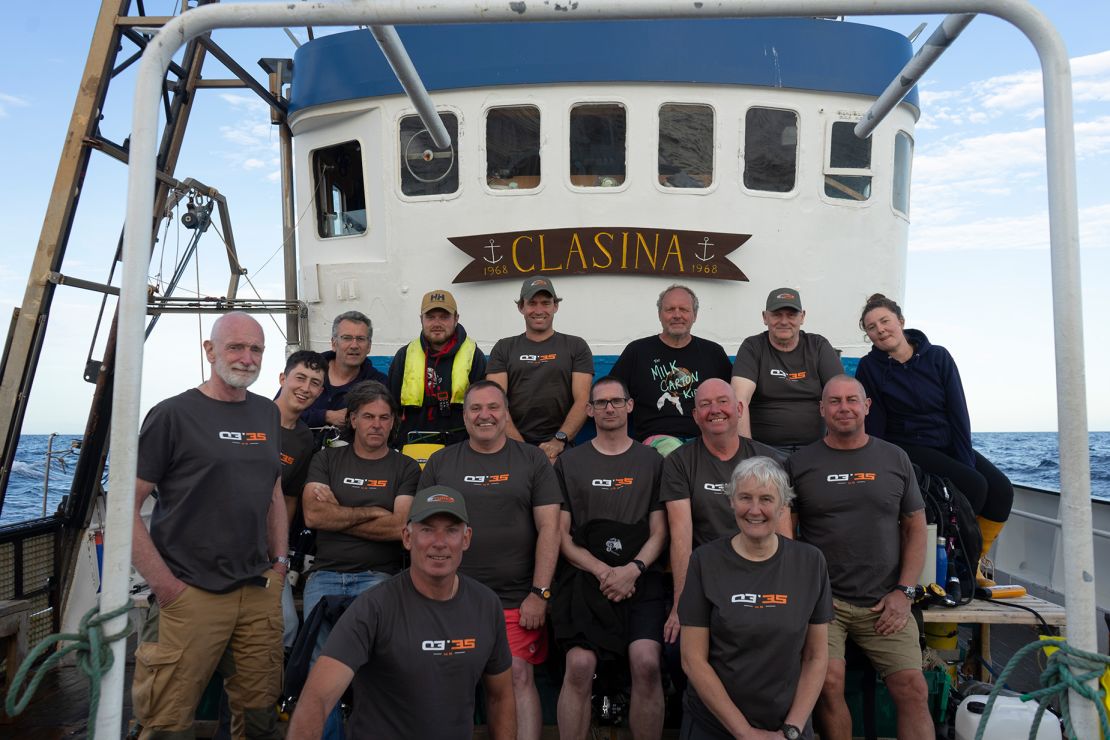Sign up for CNN’s Wonder Theory science newsletter. Explore the universe with news on fascinating discoveries, scientific advancements and more.
CNN
—
For more than 100 years, the otherworldly wreck of a British warship sat lost on the seabed, covered in barnacles and seaweed, after it was torpedoed by a German U-boat during World War I.
Now, specialist divers working with Lost In Waters Deep say they believe they have found the wreck of the HMS Hawke, which sunk on October 15, 1914, off the coast of Scotland, the organization posted on Facebook on Monday.
“She’s lying on her starboard side and under there … seems to be quite intact,” Will Schwarz, one of the divers, told CNN in a phone interview on Friday. “The guns look as if they’re still active, they’re so highly polished it’s unbelievable … I’ve never seen guns like that in such amazing condition, it’s absolutely beautiful. But, we’re very aware that 524 lads lost their lives on it.”
It took just seven minutes for the warship to slip beneath the waves once it had been hit, Schwarz said, adding that historians believe the ship’s magazine, where ammunition was stored, exploded.
As a result, 524 sailors lost their lives, including many cadets who were younger than 18 years old. The youngest to die in the shipwreck was a 14-year-old cadet, Schwarz said.
To identify the wreck’s location, Lost In Waters Deep and Buchan Divers, two organizations that work to identify Scottish shipwrecks, initially gathered evidence such as the logbooks from the German U-boat that fired the torpedo and ships in the area that survived the strike.
Armed with that information, the team examined the admiralty charts in the area and scanned the seabed in the local area in attempt to find the ship.
“The actual charts show there’s an obstruction in the area where we considered the wreck would have been,” Schwarz said. “We actually went to that to find there was nothing there but fortuitously we ran over a large object on the seabed which we decided looked ship shape enough … to try to dive on it.”
Once the divers came across the object, they descended to 110 meters (361 feet) below the surface, where they discovered the long-lost shipwreck this past Sunday, Schwarz said.
Due to the depth of the shipwreck, they were only able to stay for about 20 minutes and returned on Wednesday for another exploratory dive, he added.

“You can’t see personal human remains,” he said, “but you can see crockery — cups and saucers, some of the bridge gear is still there and navigation equipment … She’s in surprisingly good condition, you can still see the teak decks, the wood is still there.”
While the divers didn’t come across any identifying features such as a named bell that would conclusively prove that the wreck is indeed the HMS Hawke, they are virtually certain of their discovery.
“There’s only one warship in that area which has been registered lost, and the fact that she matches the identifying features of an Edgar-class destroyer means that she can only be the Hawke,” Schwarz said.
Divers might try to recover such an identifying feature in the future, Schwarz added, although he noted that “there’s no way she’s anything else” other than the HMS Hawke.








